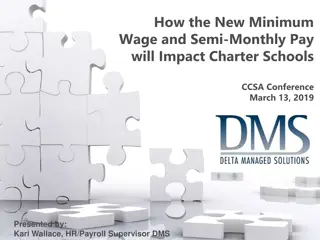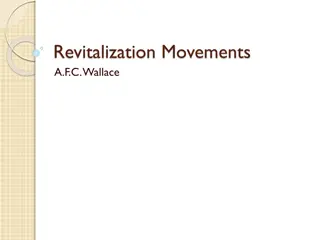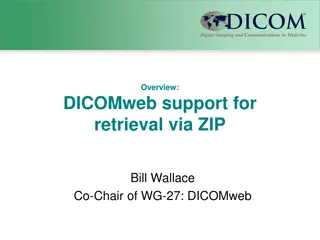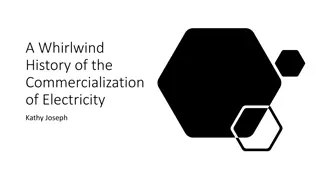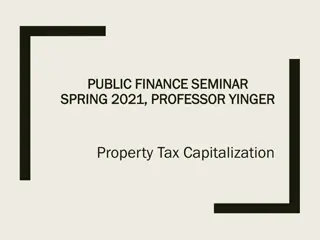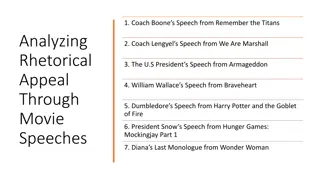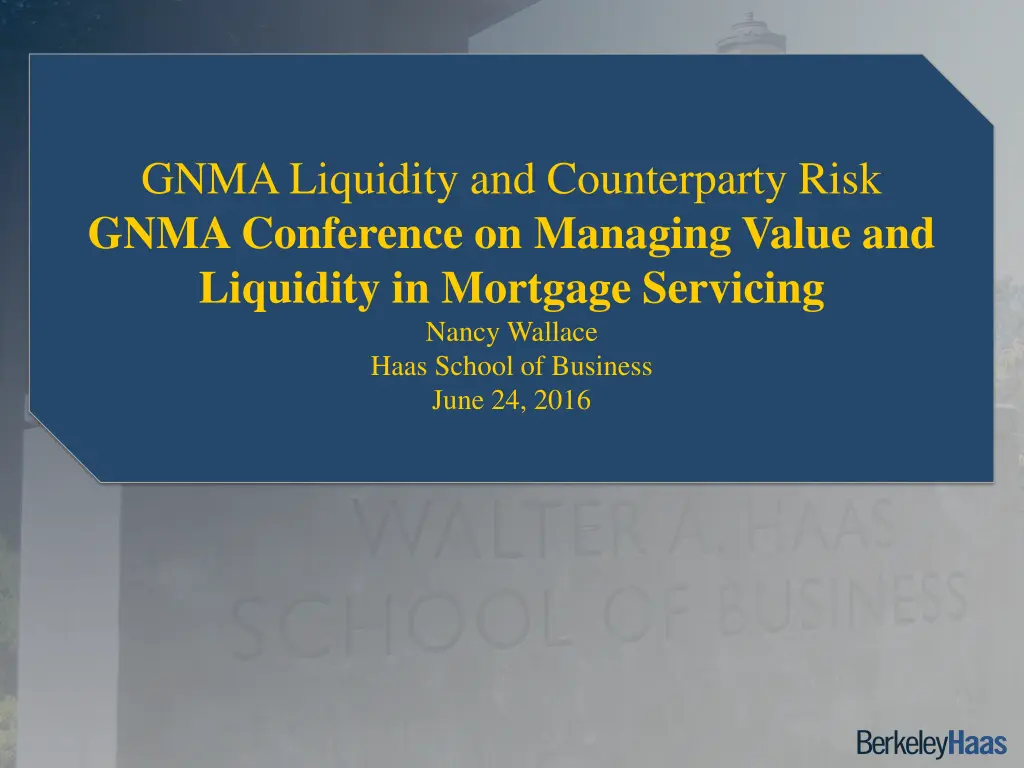
Understanding GNMA Mortgage Servicing Risks and Trends
Explore insights on GNMA mortgage servicing risks including liquidity, counterparty risk, regulatory effects, pricing differentials, OAS volatility, foreclosure rates, and prepayment speeds relative to GSEs. Stay informed on industry developments and data trends essential for mortgage professionals.
Download Presentation

Please find below an Image/Link to download the presentation.
The content on the website is provided AS IS for your information and personal use only. It may not be sold, licensed, or shared on other websites without obtaining consent from the author. If you encounter any issues during the download, it is possible that the publisher has removed the file from their server.
You are allowed to download the files provided on this website for personal or commercial use, subject to the condition that they are used lawfully. All files are the property of their respective owners.
The content on the website is provided AS IS for your information and personal use only. It may not be sold, licensed, or shared on other websites without obtaining consent from the author.
E N D
Presentation Transcript
GNMA Liquidity and Counterparty Risk GNMA Conference on Managing Value and Liquidity in Mortgage Servicing Nancy Wallace Haas School of Business June 24, 2016
Regulatory Effects on GNMA TBA Volume FHLMC TBA FNMA TBA GNMA TBA Percentage GNMA 350,000.0 25.00% MIP 50 bps Tier 1, LCR NPR GNMA Tier 1 300,000.0 20.00% Percentage GNMA TBA 250,000.0 USD Millions 15.00% 200,000.0 150,000.0 10.00% 100,000.0 5.00% 50,000.0 0.0 0.00% Dec-11 Dec-12 Dec-13 Dec-14 Dec-15 Mar-12 Mar-13 Mar-14 Mar-15 Sep-11 Sep-12 Sep-13 Sep-14 Sep-15 Mar-16 Jun-11 Jun-12 Jun-13 Jun-14 Jun-15 Source: SIFMA
Pricing differentials between GNMA and FNMA TBA GNMA TBA Price FNMA TBA Price TBA Price Differential (GNMA - FNMA) 115 3 Current Coupon 30 Year TBA Price GNMA TBA - FNMA TBA 2.5 110 2 105 1.5 100 1 95 0.5 90 0 85 -0.5 80 -1 Jul-98 Jul-03 Jul-08 Jul-13 Nov-96 Nov-01 Nov-06 Nov-11 Jan-96 Mar-00 Jan-01 Mar-05 Jan-06 Mar-10 Jan-11 Sep-12 Sep-97 Sep-02 Sep-07 May-99 May-04 May-09 May-14 Source: Citigroup Yieldbook
GNMA and FNMA OAS Volatility GNMA OAS - FNMA OAS 40 20 0 Oct-96 Jul-97 Oct-99 Jul-00 Oct-02 Jul-03 Oct-05 Jul-06 Oct-08 Jul-09 Oct-11 Jul-12 Oct-14 Jan-96 Jan-99 Jan-02 Jan-05 Jan-08 Jan-11 Jan-14 Apr-98 Apr-01 Apr-04 Apr-07 Apr-10 Apr-13 -20 -40 -60 -80 Source: Citigroup Yieldbook, REFM Calculations
GNMA Foreclosure Elevated Relative to GSEs GSE Yr 1 Forecl GSE Yr 3 Forecl GSE Yr 2 Forecl GSE Yr 4 Forecl GNMA Yr 1 Forecl GNMA Yr 3 Forecl GNMA Yr 2 Forecl GNMA Yr 4 Forecl 0.40% 4.50% 4.00% 0.35% 3.50% 0.30% 3.00% Foreclosure Foreclosure 0.25% 2.50% 0.20% 2.00% 0.15% 1.50% 0.10% 1.00% 0.05% 0.50% 0.00% 0.00% 200901 200905 200909 Pool Origination Vintage 201001 201005 201009 201101 201105 201109 201201 201205 201209 200901 200905 200909 Pool Origination Vintage 201001 201005 201009 201101 201105 201109 201201 201205 201209 GNMA Foreclosure GSE Foreclosure Source: RMS, REFM calculations
GNMA Prepayment is Slower Relative to GSEs GSE Yr 1 Prepay GSE Yr 3 Prepay GSE Yr 2 Prepay GSE Yr 4 Prepay GNMA Yr 1 Prepay GNMA Yr 3 Prepay GNMA Yr 2 Prepay GNMA Yr 4 Prepay 70% 60% 60% 50% 50% 40% Prepay 40% Prepay 30% 30% 20% 20% 10% 10% 0% 0% 200901 200906 200911 Pool Origination Vintage 201004 201009 201102 201107 201112 201205 201210 201303 201308 200901 200906 200911 Pool Origination Vintage 201004 201009 201102 201107 201112 201205 201210 201303 201308 GSE Prepayment GNMA Prepayment Source: RMS, REFM calculations
Top 100 GNMA Producers are largely non-depositories Depositories Non Depositories 120% 100% 80% 65 % 71 60% 40% 20% 0% 2016 (Q1) 2015 (Q1-Q3) Source: Inside Mortgage Finance
Primary Non-Depository Funding Source: Mortgage Repurchase Agreements Strict capital and accounting covenants Significant roll over risk (short maturities) Often highly concentrated Repo-Buyer counterparty exposure Risk of haircuts and dynamic margins Exempt from Automatic Stay under BAPCPA 2005 Reps and warranty risk resides with originator (Repo seller who has little capital)
Pre-crisis New Century Committed MRAs (December 2005) Warehouse Lenders (MRAs) -- TOTAL $14.35B Bank of America, N.A. - $3B Barclays Bank, PLC - $1B Bear Stearns Mortgage Capital - $800M Citigroup Global Markets Reality Corporation -$1.2B Credit Suisse First Boston Capital, LLC - $1.5B Deutsche Bank - $1B IXIS Real Estate Capital, Inc - $850M Morgan Stanley Mortgage Capital Inc. - $3B UBS Real Estate Securities Inc. - $2B Off-Balance Sheet Borrowing -- TOTAL $2B Von Karman Funding Trust - $2B Source: New Century 10Q filing.
Penny Mac Mortgage Investment Trust: Warehouse Lines (74% Liabilities, 8 Month WAM) and Net Capacity, (10Q 2016:Q1) Line Net Credit Suisse First Boston Mort. Capt. Citibank Bank of America, NA JPMorgan Chase & Co Morgan Stanley Bank, NA Daiwa Capital Markets Barclays Capital BNP Paribas Fannie Mae Capital Markets Deutsche Bank Goldman Sachs Other Unamortized debt issuance costs $858,021,000 $824,003,000 $568,850,000 $543,313,000 $136,000 $252,082,000 $462,000 $178,994,000 $12,379,000 $10,122,000 $5,863,000 $5,863,000 $784,000 $262,000 $656,000 ($1,081,000) $3,258,502,000 $13,488,000 $752,000 0 0 Total $80,000 $239,000 0 $784,000 $262,000 $655,000 Source: PennyMac Mortgage Investment Trust, Form 10Q filing.
Conclusions GNMA TBA pricing appears to capitalize regulatory capital advantages 0% risk weight. GNMA MBS producers increasingly non-depository mortgage companies 71% non-depository. Non-depository pipeline funding is fragile: Pre-crisis mortgage origination funding structures are still dominant especially master repurchase agreements (MRAs). MRA funding structures are vulnerable to: 1) roll-over risk; 2) many other debt covenants (especially accounting triggers) -- this was a very important pre-crisis problem leading to the collapse of lending infrastructure and many firm bankruptcies. MRAs have repo status so they are exempt from automatic stay --Warehouse lenders (Repo Buyers) will run when market softens. Non-depository warehouse borrowers (repo sellers) have no capital, but they bear the rep and warranty risk is this sensible?



